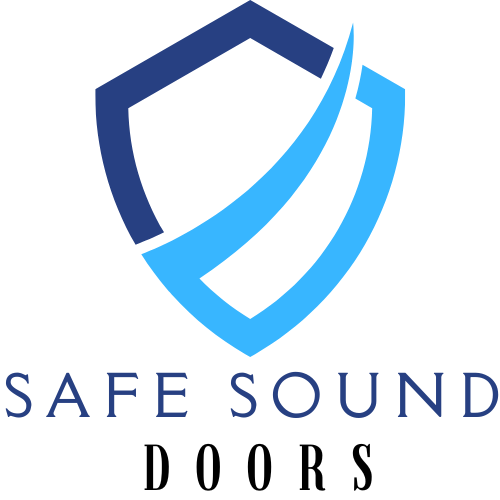Share
How to Fire-Test a Soundproof Door: What Every Buyer Should Know
Estimated Reading Time: 6 minutes

🔥 Why Fire-Testing Is Critical for Soundproof Doors
When it comes to soundproof doors—especially those installed in high-risk or commercial environments—fire resistance is just as important as noise control. A door might block sound effectively, but if it can’t hold up during a fire, it fails where safety matters most.
Fire-testing ensures that a door meets national or international safety standards. Without it, your investment could compromise both lives and property.
🧪 What Happens During a Fire Test?
Fire testing simulates real-life fire conditions in a controlled lab environment. It measures three main things:
- Integrity (E): How long can the door stay intact without flames passing through?
- Insulation (I): How long can it prevent heat from transferring to the other side?
- Stability (R): How long can it hold its shape and remain mounted?
Most soundproof fire-rated doors are tested under standards such as:
- UL 10C (United States)
- EN 1634 (Europe)
- BS 476 Part 22 (UK & Commonwealth countries)
Test durations typically last 30, 60, 90, or 120 minutes.
Example: A door rated 60 minutes under UL 10C means it can withstand direct flame for one hour without losing integrity or insulation.
🔍 Can a Door Be Both Fireproof and Soundproof?
Yes — but only if designed and tested accordingly.
A well-engineered door integrates fire-resistant cores (like magnesium oxide or fire-treated honeycomb) with acoustic seals and insulation layers to reduce decibels.
✅ Tip: Check for dual certification — a credible manufacturer will show results for STC rating (Sound Transmission Class) and fire resistance certification.
🧰 What Should Buyers Ask Before Purchasing?
To avoid unsafe or underperforming products, ask these 5 key questions:
- Is the door tested by a certified lab (e.g., UL, Intertek, SGS)?
- Does the fire test report include insulation performance, not just integrity?
- Is the test report for the exact model you are buying?
- Does the door maintain its soundproof rating after fireproof treatment?
- Can you provide the test certificate or report?
If your supplier hesitates or can't show documentation — walk away.
🏗️ Where Fire-Tested Soundproof Doors Are Needed Most
- 🏨 Hotels & Hospitality – Corridor and room separation
- 🏢 Offices & Meeting Rooms – Fire code compliance
- 🏠 Homes – Especially for kitchens, basements, or attached garages
- 🎶 Studios & Entertainment Spaces – Fire-safe acoustic environments
- 🏗️ Commercial Buildings – Mandatory for code approvals in many regions
📦 What a Certified Door Label Looks Like
You should find a metal label or sticker on the top or side of the door, showing:
- 🔖 Certification body (e.g., UL)
- 🔥 Fire rating duration
- 🔊 STC rating (optional but ideal)
- 🆔 Model number and batch info
If this label is missing, the door may not be compliant.
🤝 Final Advice: Don’t Just Take Their Word for It
Manufacturers may claim “fire-resistant,” but that’s not enough. Always ask for:
- A PDF of the fire test report
- A PDF of the soundproofing test report
- Video or photo proof of the actual test (if available)
A truly professional supplier will be happy to provide proof.
📞 Ready to Get Certified Safety + Silence?
At SafeSoundDoors, every door undergoes both fire and acoustic testing before it leaves the factory.
🛠 Custom sizes and designs available. Get in touch to discuss your needs!
